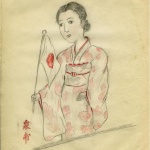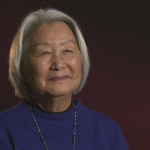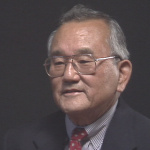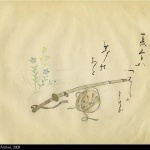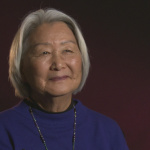George Hoshida
| Name | George Hoshida |
|---|---|
| Born | 1907 |
| Died | April 22 1985 |
| Birth Location | Kumamoto, Japan |
| Generational Identifier |
George Hoshida (1907-85) was an Issei who documented his experiences and observations of numerous World War II internment and concentration in Hawai'i and the Mainland United States in intricate a series of intricate drawings and paintings.
He was born in Kumamoto, Japan, and immigrated to Hilo, Hawai'i, in 1912 at age four with his family. His formal education ended after he graduated from junior high school. He eventually found work at the Hilo Electric Company, then later married and started a family. He was also involved in Buddhist temple activities and had a keen interest in judo, serving as the president of a Big Island judo federation.
After the bombing of Pearl Harbor, Hoshida was detained on February 6, 1942, likely because of his leadership in local Japanese community affairs. He would be transferred to numerous camps throughout the war years. Hoshida was first incarcerated in the Kilauea Military Camp on the Big Island, then at Sand Island on O'ahu, before transfer to a succession of mainland camps including Fort Sam Houston , Lordsburg and Santa Fe in New Mexico. During the first two years of his incarceration, Hoshida was separated from his wife, Tamae, and three young daughters; a fourth daughter was born in his absence. The family was eventually partially reunited at the Jerome , Arkansas, camp, although his family arrived at Jerome in January 1943 and Hoshida was not permitted to join them for another year. His eldest daughter Taeko, who was severely handicapped, had to be left behind in a Big Island institution. Tragically, she died while the family was interned. They moved a final time to the Gila River concentration camp, Arizona.
While Hoshida was incarcerated, he documented camp life with pencil and brushwork in a series of notebooks, like a visual diary, which he kept between 1942 and 1945. His notebooks provide an extensive and personal record of his wartime thoughts and experiences and represent the only known depictions of the Kilauea camp. Hoshida's drawings and watercolors depict his time behind barbed wire and include portraits of fellow inmates, scenes of daily activities, and the surrounding camp environment in great detail. He also used his drawing skills to teach other inmates art. Some of his drawings were used to illustrate the 1983 volume of poetry written by Hawai'i internees, Poets Behind Barbed Wire , published by Bamboo Ridge Press.
In December 1945, Hoshida and his family returned home to Hilo, Hawai'i. In 1959, Hoshida, along with his wife and daughter Carole, resettled in Los Angeles where he worked as a deputy clerk in the municipal court and received his GED. After retiring, Hoshida returned to Hawai'i where he wrote and published an autobiography entitled, Life of a Japanese Immigrant Boy in Hawaii . After his death in 1985, the family donated his collection to the Japanese American National Museum in Los Angeles in 1996. Much of the collection has been digitized and is available for viewing online, including the online exhibition "The Life and Work of George Hoshida: A Japanese American's Journey."
For More Information
George Hoshida Collection. Japanese American National Museum. http://www.janm.org/collections/george-hoshida-collection/ .
Hoshida, George and Tamae. Taken from the Paradise Isle: The Hoshida Family Story . Ed. Heidi Kim. Foreword by Franklin Odo. Boulder: University of Colorado Press, 2015.
"The Life and Work of George Hoshida: A Japanese American's Journey." Japanese American National Museum. http://www.janm.org/exhibits/hoshida/ .
Chinen, Karleen. Remembering George Hoshida." Hawaii Herald , May 3, 1985, 2.
Hirayama, Laura. "Portraits of Internment." Hawaii Herald , Dec. 3, 1982, 12–13.
Last updated Oct. 5, 2020, 6:16 p.m..


